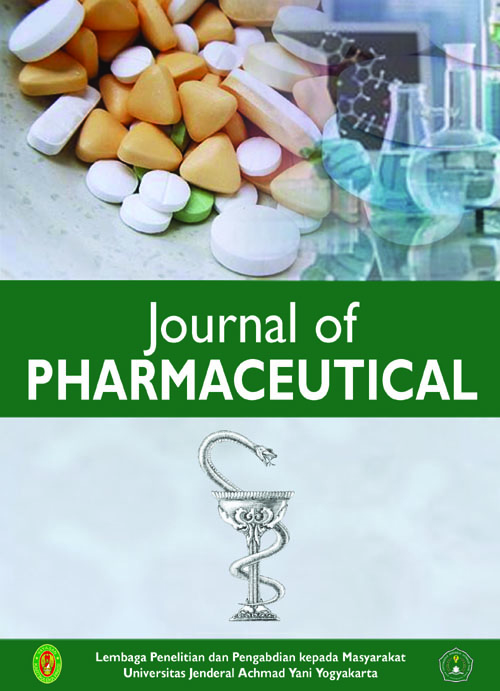Pengaruh Variasi Waktu Ekstraksi terhadap Aktivitas Peredaman Radikal Bebas DPPH Ekstrak Biji Kopi Robusta Lampung Barat
DOI:
https://doi.org/10.30989/jop.v2i2.1454Kata Kunci:
Robusta coffee beans, DPPH, West Lampung, UAE, Extraction timeAbstrak
Background: Robusta Coffee (Coffea canephora) has been cultivated in Indonesia, especially in the West Lampung area. Robusta coffee contains secondary metabolites that act as antioxidants, namely chlorogenic acid and other phenolic components. These secondary metabolites of robusta coffee bean can be obtained using the extraction method. The ultrasound-assisted extraction (UAE) is a well-known method to be more effective and lower temperature than other extraction methods. Variations in time impacted by the antioxidant activity of coffee bean extract.
Research objective: To determine the effect of variation in extraction time on the free radical reduction activity of DPPH from West Lampung Robusta coffee bean extract.
Research method: Robusta coffee beans were extracted by the UAE method using a 70% ethanol solvent (1:100). The variation in extraction time was 10, 20, and 30 minutes. Robusta coffee bean extract was subjected to organoleptic tests, phytochemical screening, and antioxidant activity in DPPH free radical scavenging.
Research results: The yield results at 10, 20, and 30 minutes of robusta coffee bean extract were 24.04%, 35.71%, and 20.15%. The results of the organoleptic test of the extract produce a thick texture, brown color, and unique aroma. The results of the phytochemical screening of the extract contain alkaloids, phenolics, tannins, and flavonoids. The IC50 values at the time variations of 10, 20, and 30 minutes, and quercetin were 29.97 ± 2.737 ppm; 30.5 ± 1.745 ppm; 23.31 ± 4.638 ppm; and 1.42 ± 0.440 ppm respectively, which were significantly different.
Conclusion: The variation in extraction time affected the free radical reduction activity of DPPH was an extraction time of 30 minutes in the most optimal DPPH free radical scavenging activity



